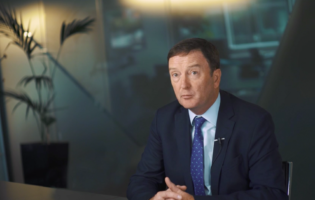Investment Outlook - Market Update

The first half of the year delivered strong equity market returns and notably against an economic background that was very different to that forecast by the consensus of economists for 2024. In hindsight, it was a six-month period where all news was interpreted as seemingly ‘good news’ for markets, the key beneficiaries being the concentrated Magnificent 7 group of US technology names. Irrespective of the economic scenarios that emerged—be it more or less than expected inflation, economic growth or importantly interest rate expectations, these stocks attracted investors and generally left the rest of the market behind.
Looking to the second half of 2024, inflation and growth have indeed proven to be stronger than expected, and the consensus has rapidly repriced downwards expectations to 2+ US rate cuts now, for 2024 with a strong consensus that the economy will land softly with no recession. Our narrative of ‘regime change’ has been consistent over recent years being one where investors will have to adjust to a world of stickier inflation and a higher and more normal level for interest rates and bond yields than experienced over previous years. That reality has now dawned.
Somewhat ironically with equity markets continuing to deliver strong returns and hit new highs, we are asked more and more about risks such as recession or especially geopolitical. This at a time when the strong economic consensus is for a soft landing in the all-important US economy. To rationalise the market performance year-to-date, one could conclude therefore that much of investor money has been parked in the Magnificent 7 US names, while these risks are reflected in the poorer performance of the rest of the market reflecting people’s worries.
In terms of outlook, the strong consensus conviction is for a soft economic landing, lower inflation and interest rate cuts. On the basis that such events do occur as the year progresses this strongly suggests to us an environment that emerges with a strong market rotation away from the expensive mega-cap technology names towards more attractive value and small-mid capitalisation stocks across market indices globally. This is also consistent with the beginnings of the next economic cycle.
At an aggregate market level this may not see material upward moves at the overall market index level, but certainly one that rewards strong active stock picking. We remain mindful that political risks abound, the US Presidential election looming particularly so, but market wise the result is likely largely priced in at this point.
Asset class outlook:
Equities
As in 2023, the market returns YTD in 2024 have generally exceeded earnings growth, and as a result, market valuations are now at an aggregate level trading above historic averages and cannot be described as cheap. The market however is split between “have’s and have-not’s” with the re-rating being predominantly driven by the AI driven technology names. Fundamentals including earnings growth do matter and as we progress through 2024, we do expect the broadening of earnings growth across the market to be reflected in stock price performance.
While the strong consensus is for a soft landing and a positive catalyst for rotation, we would also at this point argue that should a mild recession occur that valuations are such that for much of the stock-market that once a hard landing is avoided it should be a catalyst for a rotation and broadening of performance across the market, an environment that should suit good stock picking.
At a regional level we continue to note that the North American equity market in aggregate looks the most expensive compared to other global markets. In contrast, European and the strongly out of favour Emerging Market equity markets look much more attractively valued.
Bonds
Bonds as an asset class have experienced two difficult back-to-back years of performance during 2022 & 2023 and have struggled again so far during 2024. This is not a surprise to us who have argued that a new regime change was consistent with higher and for longer bond yields and interest rates. Noting that the aggressive central bank rate rising environment is now behind us with the outlook more favourable as we look to the second half of the year expecting rate cuts next across the world including Europe and the US. That said, we aren’t particularly bullish on the outlook for lower bond yields, arguing more that they are now at fair value rather than cheap. The prospects of a Republican victory in the US election combined with a reasonable chance of a ‘red sweep’ would be negative for US bond markets.
Risk wise, we continue to monitor corporate bond markets for any signs of distress at a company or indeed sectoral level. We watch spreads that to date have shown very little if any signs of stress.
Disclaimers:
KBI Global Investors Ltd is regulated by the Central Bank of Ireland. Please note that, as of 1 January 2023, KBI Global Investors Ltd. has withdrawn from the UK’s Temporary Permissions Regime (the “TPR”) on the basis that the firm is availing of an exclusion available for overseas persons. KBI Global Investors (North America) Ltd is a registered investment adviser with the SEC and regulated by the Central Bank of Ireland. KBI Global Investors (North America) Ltd is a wholly-owned subsidiary of KBI Global Investors Ltd. ‘KBI Global Investors’ or ‘KBIGI’ refer to KBI Global Investors Ltd and KBI Global Investors (North America) Ltd.
Under MiFID II this is deemed marketing material and should not be regarded as investment research. This material is provided for informational purposes only and does not constitute an offer to sell or the solicitation of an offer to purchase any security, product or service including any group trust or fund managed by KBI Global Investors. The information contained herein does not set forth all of the risks associated with this strategy, and is qualified in its entirety by, and subject to, the information contained in other applicable disclosure documents relating to such a strategy. KBI Global Investors’ investment products, like all investments, involve the risk of loss and may not be suitable for all investors, especially those who are unable to sustain a loss of their investment.
PAST PERFORMANCE IS NOT NECESSARILY INDICATIVE OF FUTURE RESULTS.
This introductory material may not be reproduced or distributed, in whole or in part, without the express prior written consent of KBI Global Investors. The information contained in this introductory material has not been filed with, reviewed by or approved by any regulatory authority or self-regulatory authority and recipients are advised to consult with their own independent advisors, including tax advisors, regarding the products and services described therein. The views expressed are those of KBI Global Investors and should not be construed as investment advice. We do not represent that this information is accurate or complete and it should not be relied upon as such. Opinions expressed herein are subject to change without notice. The products mentioned in this Document may not be eligible for sale in some states or countries, nor suitable for all types of investors. Past performance may not be a reliable guide to future performance and the value of investments may fall as well as rise. Investments denominated in foreign currencies are subject to changes in exchange rates that may have an adverse effect on the value, price or income of the product. Income generated from an investment may fluctuate in accordance with market conditions and taxation arrangements. In some tables and charts, due to rounding, the sum of the individual components may not appear to be equal to the stated total(s). Additional information will be provided upon request. Performance for periods of more than 1 year is annualized. Gross results shown do not show the deduction of investment management fees. A client’s actual return will be reduced by the management fees and any other expenses which may be incurred in the management of an investment account. For example, a €1,000,000 investment with an assumed annual return of 5% with a management fee of 0.85% would accumulate €8,925 in fees during the first year, €48,444 in fees over five years and €107,690 in fees over ten years.




